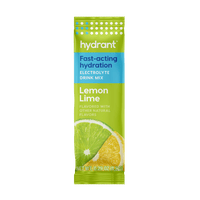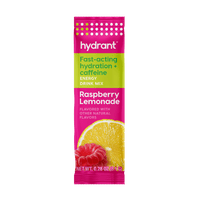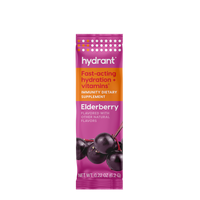Are you interested in continuing your gardening during the winter? You can still grow some plants, since many varieties are not harmed by extreme temperatures. Plants have the ability to adjust to the cold winter temperature, although their growth rate will likely slow dramatically, and they will not flower until it gets warm again.
If you want to learn more, be sure to keep reading! We have everything you will want to know about winter gardening in this article.
Winter Mulch
To start, you will want to collect some winter mulch to prepare your garden for the cold months. Often, between 2 and 4 inches of mulch is enough to insulate your plants. Roses need more protection, so you will want to ensure they are buried deep within the soil.
For mulch, you can use pine needles, straw or hay, or bark chips. You will also need to focus on your timing since adding mulch when the outside temperature starts to be consistently below freezing is best. [1]
Make sure that you do not smother your plants in winter mulch; they still need room to breathe. Keep in mind that they are more in danger during the spring when the weather can fluctuate between cold and warm suddenly. During the winter, the weather is generally pretty consistent, so your plants do not have to adjust as often.

Using fall leaves also helps put nutrients back into the soil, making it one of the best options for a protective winter mulch. Leaves and similar materials insulate the roots of your plant, which helps them resist freezing when it gets cold outside.
Worms and other insects also love leaves. If you use them as a mulch, it keeps them around longer during the winter, allowing your soil to stay aerated and healthy.
Protect Your Flowering Plants
Most of your plants that are below ground will make it through the winter. However, if you have any plants that are blossoming, they could be harmed by the cold.
When buds are about to bloom, this is when they are in the most danger. Freezing can harm the buds and cause them to not show up for a long time. You might not even notice the damage until the flowers completely bloom when they have brown spots on them.
Plus, if the bud freezes completely, it will fall off of your plant. If the petals were already fully opened, they might fall off as well.
How can you protect your flowering plants? To start, you will want to cover them with a frost cover or an old bedsheet. Just make sure that you never use plastic, as it can cook your plants when the sun hits it. [2]
Covering your plants helps to protect the buds from being damaged by frost. You can also take the buds inside before it freezes outside. They will open in your home. If you have taken the buds off, you will not need to cover your plants that are outside.
Bring in Your Houseplants
If you have any houseplants outside, you will want to bring them in before a big freeze. You might want to rinse them off to avoid bringing any small bugs into the house.
After that, make sure that you place them where they can receive sunlight for several hours a day. You will want to make sure they are not near heat sources since this can cause them to wilt.
Finally, you do not need to water your houseplants as often during the winter. They do not grow as much during this time, so they tend to take in a lot less water than during the warmer months. Because of this, it can be easy to overwater them, which can make your plants less healthy.
When to Water
You will want to thoroughly water your garden before the first hard frost arrives. Once the ground is frozen, you might want to add more mulch around the stems of more fragile plants.

You do not want to water your garden when there is a freeze coming. Doing so does not give your plants enough time to react. If you water a few nights before, your plants have more time to process the water you give them and can prevent damage due to freezing.
While you may not be watering your garden as much in the winter, don't forget to take care of your hydration levels! Loss of fluids and dehydration, especially in the winter, can still leave you fatigued, tired, and with headaches. After a long day in the garden, make sure to replenish with lots of water, electrolyte-filled foods, and drink mixes (like Hydrant!) to keep your body balanced, hydrated, and happy!"
When to Turn Your Garden Soil
You will want to turn your garden’s soil after the last freeze of the winter passes. This time is usually in the spring when the soil has dried out, and the temperature outside is starting to heat back up.
Depending on where you live, this process may be done in March or much later. At the latest, people tend to wait until June to turn their soil for the next growing season.
Improve Your Soil Over the Winter
Even though you have to wait until the spring to turn your soil, you can start improving it now. Winter mulch protects your plants while depositing material and nutrients back into your soil. Leaves work wonders for this process; you probably have a bunch in your backyard right now, too.
If you pluck winter weeds, you might want to consider letting them grow. They will not drown your plants. In fact, they can help to stop erosion. Plenty of winter weeds also help to improve the soil and protect your buried plants from the frost.
Finally, if you make compost to add to your soil, you do not need to stop in the winter. Freezing weather makes it easier for compost to break down, making it prepared for the spring when you are ready to dig into your garden again. [5]
Composting can make winter gardening easier since your plants will be provided with the nutrients they need to resist harsh frosts.
Growing Winter Food
There are some plants that thrive during the winter. Most greens, including chard, lettuce, kale, and arugula, do well in the cold months. You will want to grow them in a cloche; you can even make your own from bottles easily. They provide your plants with protection from the cold by creating a greenhouse effect. [4]
Other root crops will grow during the winter and be ready for harvesting during the spring.
Greenhouse Gardening in Winter Tips
When winter vegetable gardening, you can also grow your produce in a greenhouse. Greenhouses offer you a place to create a controlled environment, so your plants should be able to thrive no matter the season, even the coldest winter nights.
Did you know that it’s easy to DIY a greenhouse? You can use clear plastic bottles or build one from cedar branch hoops. There are also plenty of more DIY greenhouse ideas that you can find online.
Start by making a box out of wood. It can be any size that you like. Then, simply cover it with a clear plastic cover. Since you are designing this greenhouse yourself, you can fit it easily to your current garden beds. [6]
When you use a greenhouse, you no longer have to worry about your plants during the winter. Make sure that you remove the plastic when it gets warm so that you do not accidentally burn your plants.
Overall, you get plenty of benefits from a winter greenhouse. Your plants have a longer growing period, get weather protection, are protected from insects and pests, and will not be affected by big frosts.
What Not To Do
You do not want to fertilize your garden during the winter. [3] Plants want to rest during the cold months, but fertilizer causes them to expend more energy trying to grow. New growth is easily harmed by winter frosts.

You will also want to avoid watering your garden as often. During the brief warm periods, you might want to consider watering your plants. However, if the ground is frozen or is covered in snow, you might be causing damage to your plants.
Overall, the more you can leave your garden alone after the freezing weather hits, the better. All you need to do is worry about the preparations beforehand, and your plants will handle the rest.
Summary
There are plenty of ways that you can continue working on your garden during the winter. You will want to research winter gardening ideas online for more information if you are interested. You can protect your plants with winter mulch or even a DIY greenhouse—it’s up to you and how much time and effort you want to put into your winter garden.
To summarize, there are many steps that you will want to take to protect your plants from the cold. Start by bringing in your houseplants and ensuring that your garden is set up to resist the first frost.










